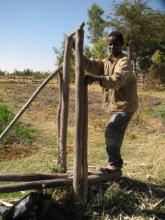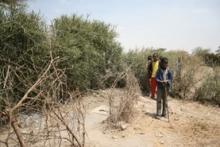Technology
Greywater reuse has potential for non-potable applications that conserve freshwater resources in water-stressed areas especially in sub-Saharan Africa. The feasibility of reusing greywater for domestic activities in a rural area of Malawi, Africa, was evaluated from microbiological and public acceptance perspectives. Median Escherichia coli concentrations for eight domestic greywater sources (handwashing, laundry, runoff from a tap apron, bathing, cleaning a home/kitchen, cleaning a water collection container, washing plates and soaking vegetables) ranged from 100 to >20,000 colony forming units (cfu)/100 ml. Twenty-four of 47 greywater samples tested (51%) met the World Health Organization guideline for unrestricted use of greywater for irrigation. Pertinently, 80% (4/5) and 60% (3/5) of greywater samples from handwashing stations and bathing had E. coli less than the WHO guideline. Users reported greatest acceptance of reusing greywater for growing food and washing clothes, especially when the greywater source was bathing. Acceptance was closely tied to a household’s economic standing, geographic location, and first-hand knowledge of reusing
greywater. Greywater reuse practices in rural areas, especially targeting bathing water as suitable from bacteriological and user perception criteria, can help mitigate the impacts of water stress in sub-Saharan Africa.
Presentation by ICIMOD and Helvetas on MUS integration in local water use master plan at different scales.
Presentation by Lata Shrestha on Solar Water Lifting Technology and MUS for Energy-Poor Communities.
This project brought together iDE-N's experience in MUS, irrigation, water management and appropriate sustainable business models with Renewable World’s experience in renewable energy and business models for income generation in extremely isolated communities.
Solar-powered water pumps, as a reliable system of lifting water, are critical to the success of this project. The traditional gravity-fed MUS, as previously implemented by iDE-N in Nepal, are designed to give priority for drinking water, with overflow water from the drinking water tank being used for agriculture and other uses. Householders are trained to use micro-irrigation systems to make efficient use of the MUS water for their agricultural needs. Micro-irrigation is a financial boon to households as it results in higher crop yields, longer growing seasons (as crops can be grown in the dry season), and better market prices (as these crops tend to be more scarce at that time of year). Increased income means that households can cover the costs of ongoing operation, maintenance, and replacement costs of multiple-use systems. Because they better meet the water needs of communities, multiple-use services also decrease conflict related to water access as well as damage to infrastructure caused by “illegal” or unplanned uses.
Presentation by Vinny Casey from WaterAid on using the technology applicability framework (TAF) in adapted form for MUS.
Presentation by the RAIN Foundation on community participation in the design of water systems.
The case study Manual well drilling: an alternative for shallow groundwater development for multiple use services (MUS) looks into the features of manual well drilling in Ethiopia and the costs and benefits. Manual drilling is a fast and relatively low-cost method of accessing shallow groundwater for multiple uses.
There is a large variation in cost between the enterprise or organisations involved, and diameter. Manual drilling is normally cheaper than hand digging. Reasons are due to time taken and the lower cost of lining.
Initially, promotion and distribution of manually drilled wells was set up for irrigation, but in practice people use these wells for various purposes, as they are convenient. The smaller diameter well and its covering slab prevent inflow from dirty surface water.
The case study is part of the MUStRAIN case study series in which the uptake of Multiple Use Services (MUS) in different contexts within Ethiopia is being documented. The case studies analyse cost-benefit relations as well as opportunities and challenges for implementation of MUS.
This case study focuses on the less documented faecal sludge reuse interventions in Ethiopia: Arborloo and Fossa Alterna, as implemented in East Arsi and Eastern Hararghe, in the Central Rift Valley, and in Arba Minch.
The case study is part of the MUStRAIN case study series in which the uptake of Multiple Use Services (MUS) in different contexts within Ethiopia is being documented. The case studies analyse cost-benefit relations as well as opportunities and challenges for implementation of MUS.


